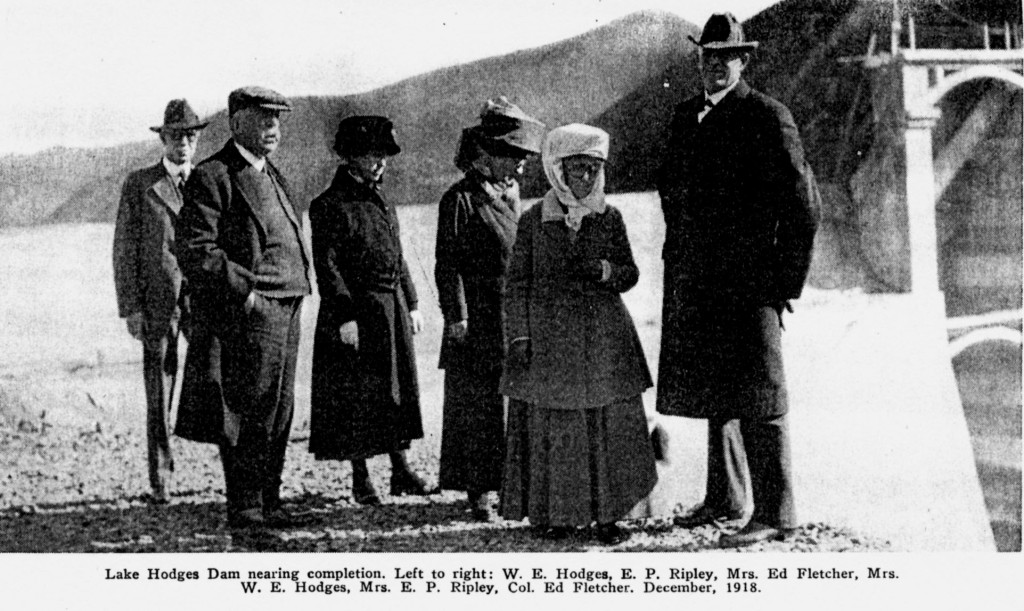Below is a headline and portion of an article from the Escondido Weekly Times-Advocate of February 18, 1918. It tells about the application of a cement coating to “that portion of the new Carroll dam which is now complete.”

There are a number of references to the construction progress of the “Carroll Dam and Reservoir” in local papers during that time period. Even before the dam was officially completed, another name for the lake started popping up in local media. Local history evolves and takes local placenames with it. In this particular case, two local farmers who also happened to be brothers, James and Thomas Carroll, had adjoining farms in an area called Crescent Valley, which had also come to be known as Carroll Canyon. Then along came the San Dieguito Mutual Water Company, with a project to dam up part of the San Dieguito River to create a more consistent water supply for the development of the city of San Diego as well as other adjacent county communities.
Ed Fletcher was one of the leaders of the San Dieguito Project, along with several executives of the Santa Fe Railroad, which owned considerable property in the county which the railroad wanted to see developed. One of those executives was the Santa Fe’s vice-president, a man named W.E. Hodges. At a dinner meeting not long before the dam was completed, Fletcher is said to have asked, “Why not call it Lake Hodges?” Hodges, according to one historical account, “reluctantly agreed.”
While providing a plentiful water supply for San Diego County’s development, Lake Hodges would also submerge a good part of the Crescent Valley, including the farms of the Carroll brothers.
Here’s a photo of Ed Fletcher, on the far right, and W.E. Hodges, on the far left, along their wives and one other San Dieguito official at the dam site in December, 1918:

Sources for this post include the privately published Memoir of Ed Fletcher, the book San Diego County Place Names A To Z, by Leland Fetzer, the archives of the Rancho Bernardo Historical Society, and historic San Diego newspapers.
